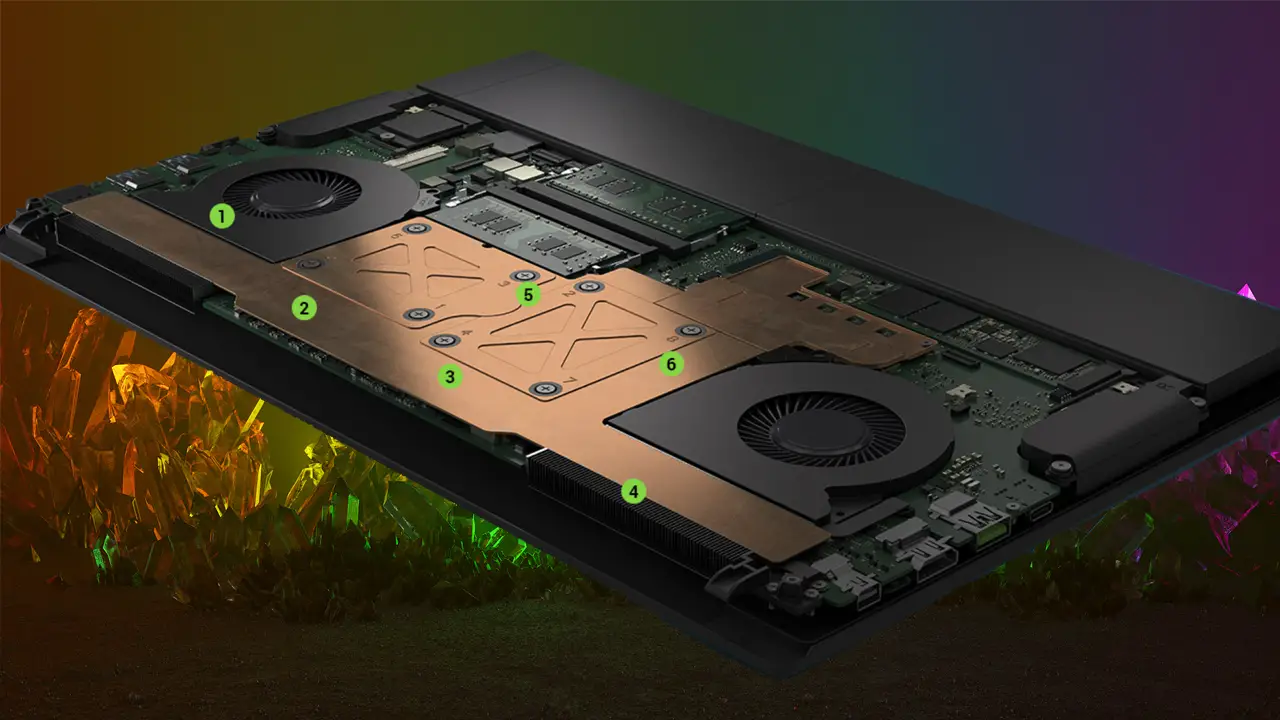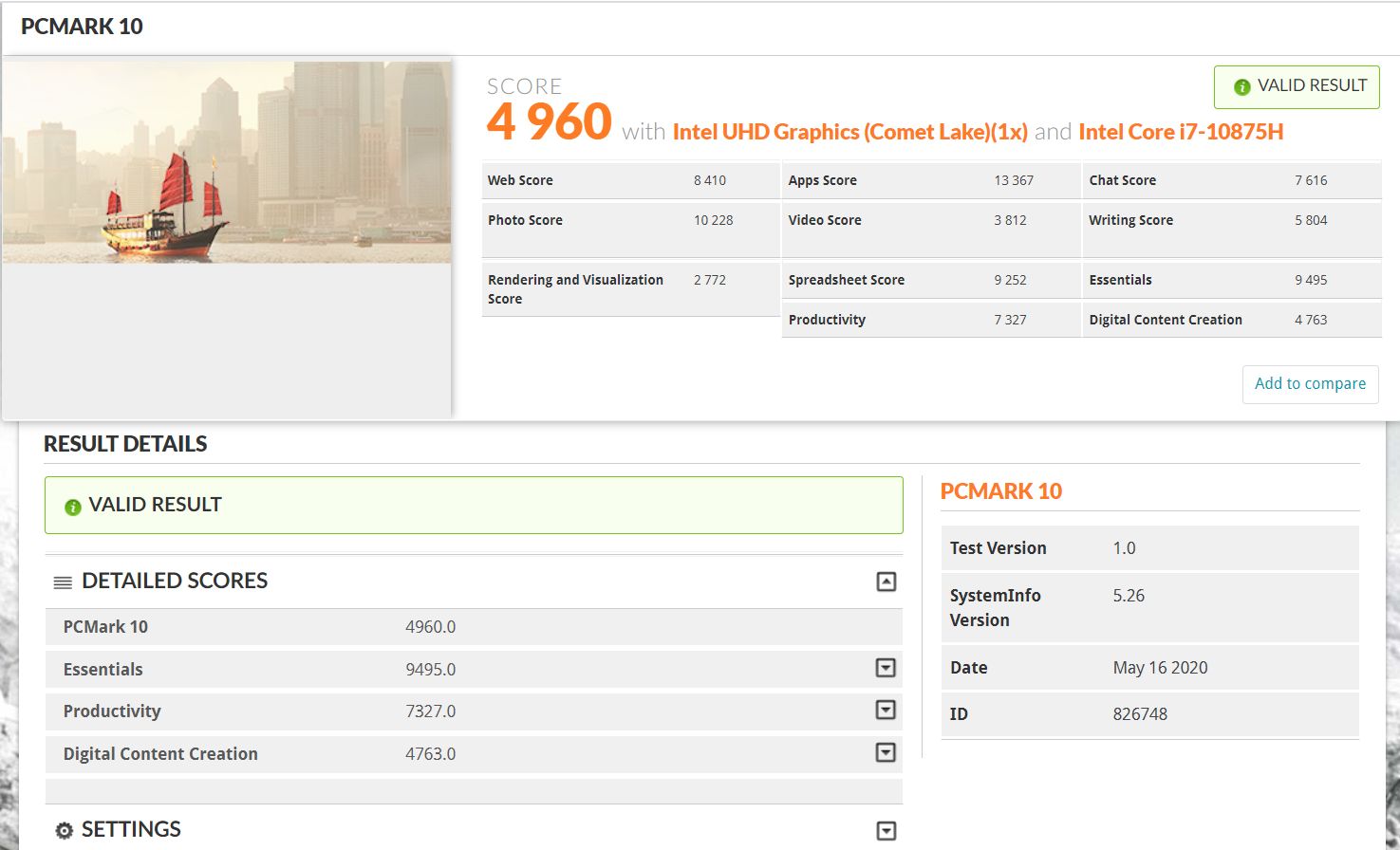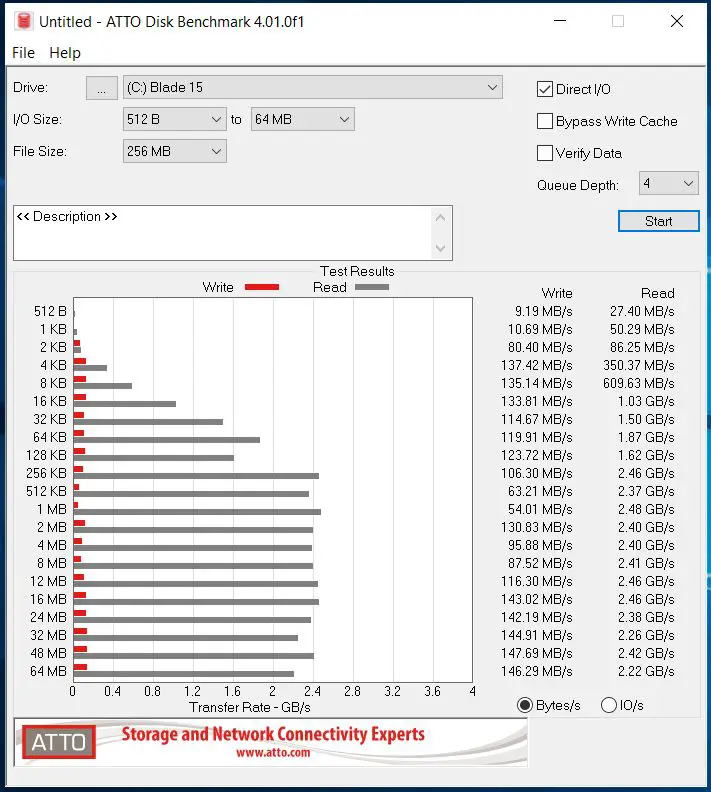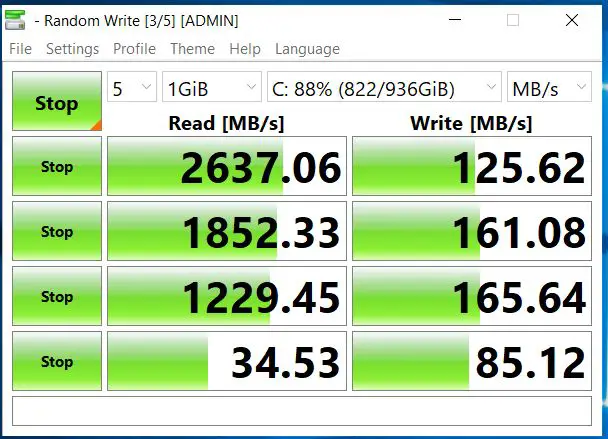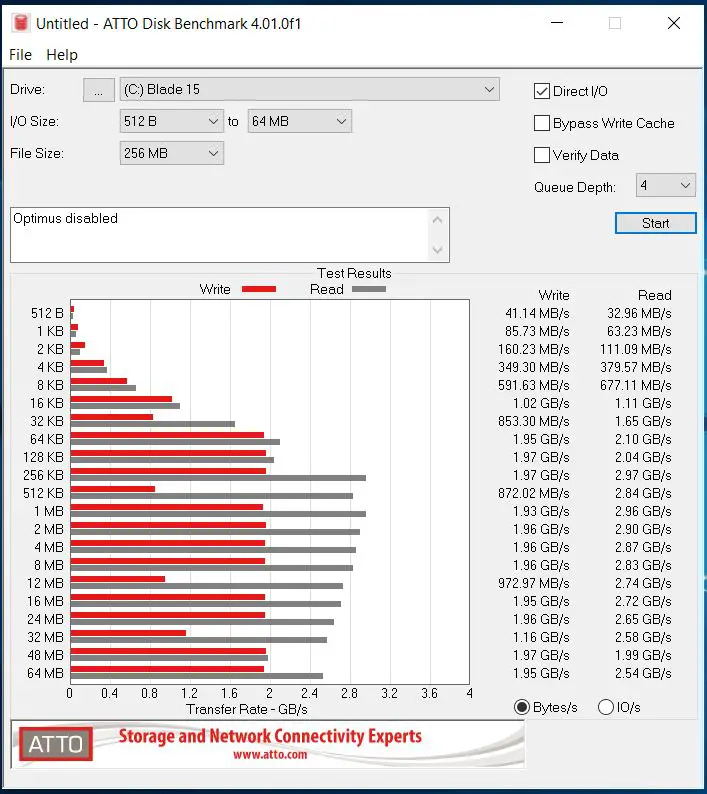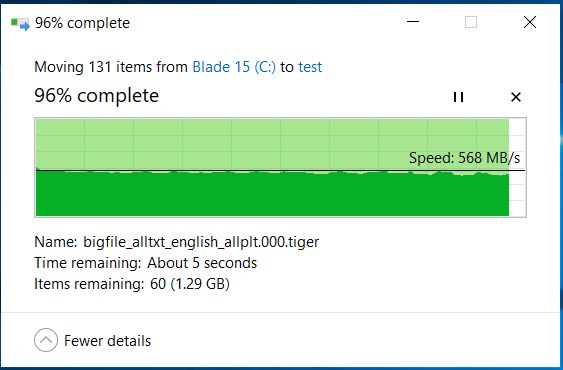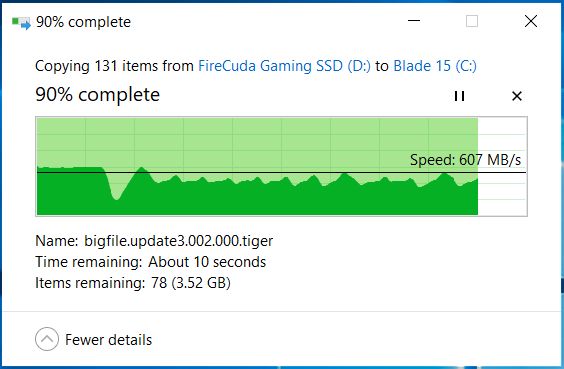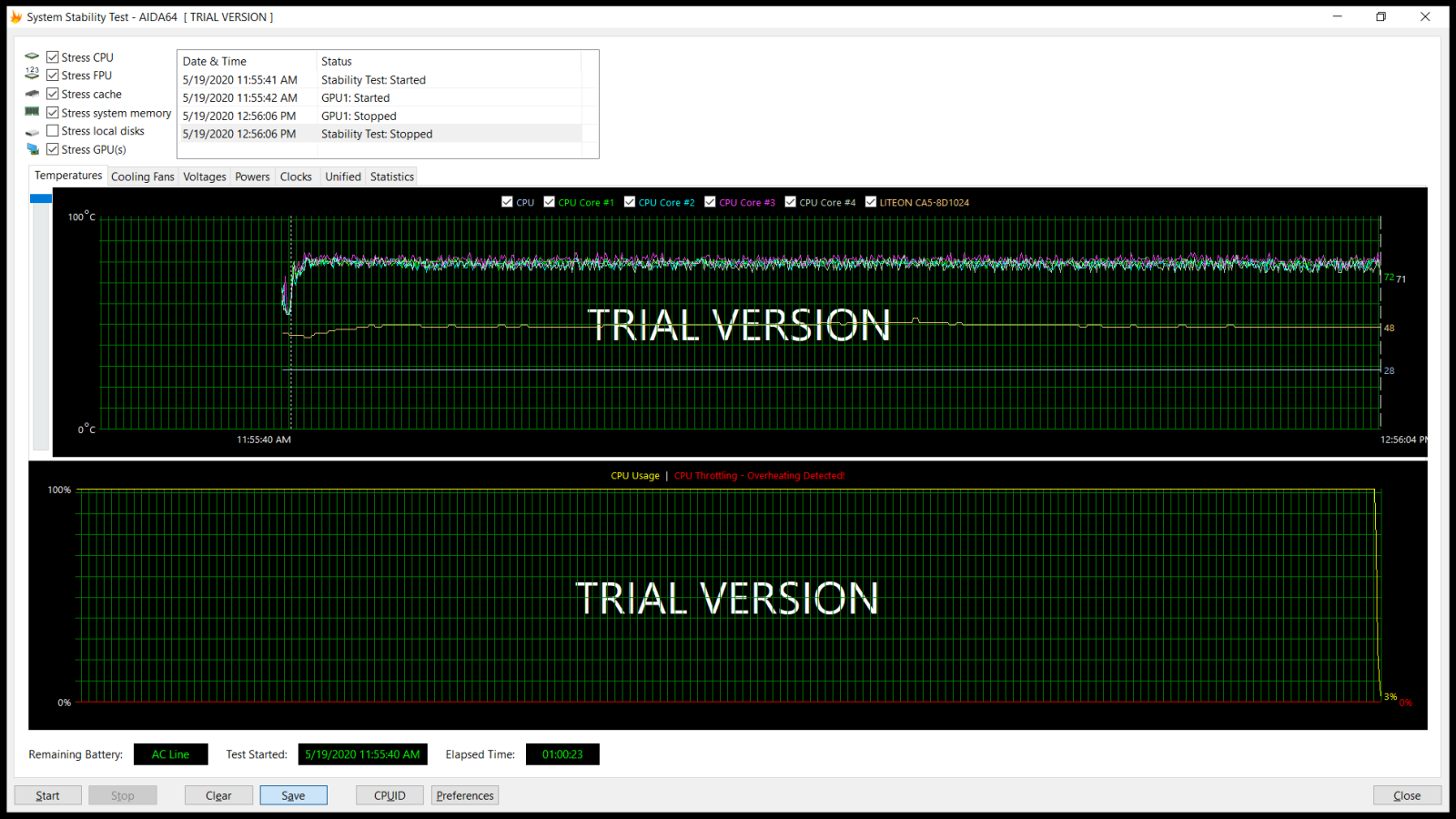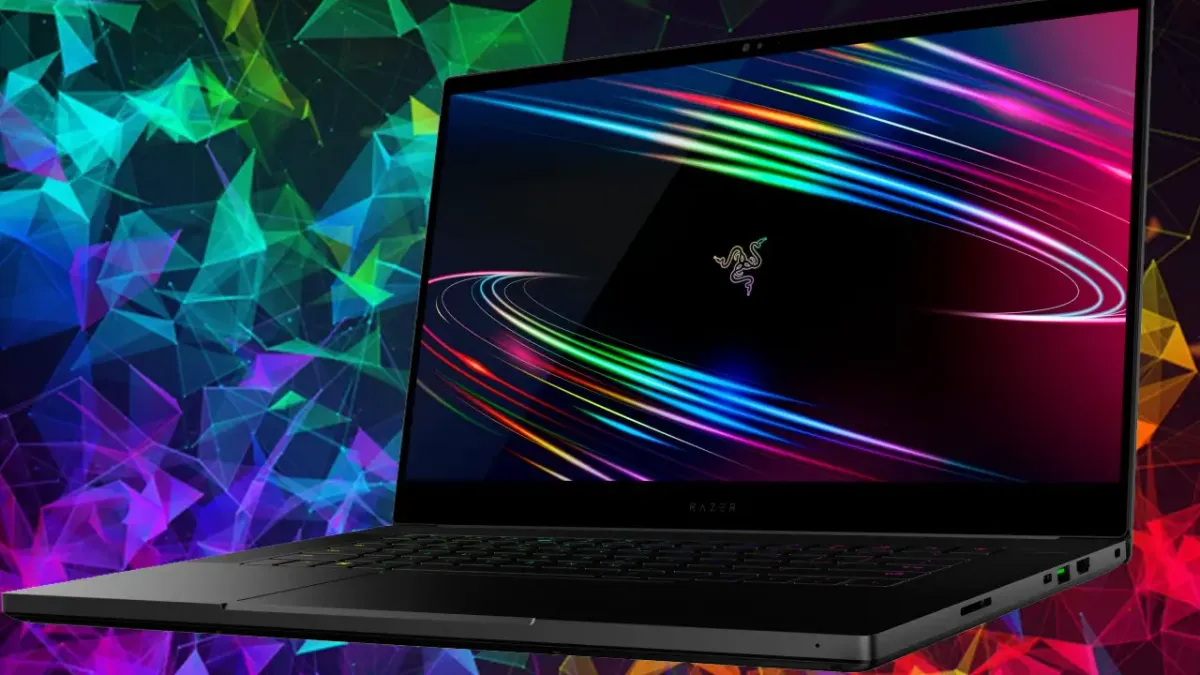
As we head towards what looks like the most visually stunning holiday gaming season to date, it’s also time to see the launch of a whole new class of laptops. More than a refresh of gear, the newest line of ultra slim laptops are absolute monsters. From the Intel Core i7 10th Gen 16-core processors to the RTX 2080 Super video cards, this fresh crop of laptops represent a generational leap over its predecessors. I’ve recently gotten the opportunity to put Razer’s newest iteration of the Razer Blade 15 to the test. First things first, let’s unbox it —
The first thing I noticed when I unboxed the device is the anodized aluminum case, which not only covers the outside but the inside as well — there’s no plastic here. Putting hands on it, the aluminum makes the whole device cold to the touch and downright tiny. At just 4.7lbs and 0.7” in thickness, the 15” laptop is easily half the weight and dimensions of any laptop I’ve ever owned. As you can see in the video, the power supply was put on the same diet, weighing in at just 1 pound, 3oz. My previous generation laptop was nearly 9lbs, plus a 3 pound brick, so my shoulder is already happy. With the device unboxed, let’s take a trip around the edge and talk about connectivity.
As this is the advanced model, the laptop comes with an array of modern port choices. On the left side lies two USB 3.2 Gen 2 ports, with a third one on the right side. Back on the left is a USB Type C port and a 3.5mm combo audio jack. On the right edge lies a HDMI 2.0b port, a Kensington lock port, a UHS-III SD Card Reader, and a very welcome Thunderbolt 3 USB-C port to round it out.
Heading inside, this advanced model comes with a 10th Gen Intel Core (i7-10875 8-Core — 2.3GHz when throttled to a max of 5.1GHz at full power), an NVIDIA GeForce RTX 2080 Super (Max-Q, 8GB DDR6 VRAM), 16GB Dual-Channel (8GB x 2) DDR4-2933MHz (with capacity for up to 64GB), 1TB SSD (M.2 NVMe PCIe 3.0 x4, swappable), and an 80Wh battery. All of this power drives a 15.6” display running 300Hz. There is an optional OLED 4K option, but having seen what higher refresh rates can do for gameplay, I acquiesced to the 1080p option.
One of the ports you might have noticed is conspicuously absent is an Ethernet port. At a time when Gigabit Ethernet is fairly ubiquitous on a gaming laptop, it was a surprise to see it missing here. The device sports the most bleeding edge Intel wireless card (Intel AX201, which supports 802.11 a/b/g/n/ac and the currency unratified ax standard, as well as Bluetooth 5), but as I downloaded several terabytes of data over the wireless, I found that I didn’t miss the Ethernet connection that much. This new Intel chip kept up with my transfer needs easily.
Rounding out the spec sheet is a keyboard with full sized keys, sporting a per-key RGB lighting engine that ties into Razer’s Chroma software. Having typed this entire review on said keyboard, I can honestly say that it feels a lot like my previous laptop which sported an excellent SteelSeries board in it — high praise indeed. Atop the screen lies an infrared capable 1MP webcam, capable of 720p. That isn’t going to win any awards, and I’m certainly I’ll be using my Kiyo for any streaming I do, but the baked in one should do fine for things like facial recognition for Hello Windows sign-in.
One of the things I immediately found myself missing is either a physical button or a function key to disable the touchpad. This generously large pad is fantastic, at least as far as touchpads go, but once you plug in a mouse it becomes a great way to accidentally skip around in your document. It’s not a huge deal, but if you frequently bounce between a mouse and the pad, you’ll need to tackle that flip with Windows control.
As you can see from within this document, I ran a metric ton of synthetic and game benchmarks. One would expect that this device, given the power, would sound like a jet engine and reach temperatures about as high. Shockingly, neither of those things are true. Even running benchmarks designed to bring any device to its knees barely raised the temperature (Unpowered temp is 77 degrees Fahrenheit) in any significant way. Similarly, the additional noise was almost imperceptible. Flipping the device over, I could see two fans that I’d need a better look at to see how either of these feats are possible.
As you can see, this laptop uses an extremely densely populated fan, with 44 blades in it to push maximum air with minimum noise. Thankfully the additional heat dissipation doesn’t come with a high pitched whine like I would have expected. The massive copper plate pulls heat away from the components, shoving it towards the heat exchangers and rear/bottom vents. Heat coming out of the rear vents of the device at idle is 94 degrees, coming up to 114 degrees at max load after 15 minutes of solid stress tests. Before boot the aluminum is just 77 degrees, coming up to 89 while I’m typing this review. A true testament to the vapor chamber cooling, even while at max load, the air coming out of the bottom fans was only 87 degrees. I’m not sure I would want it on my lap while gaming, but it is quite comfortable for general computing and movie watching.
Game Benchmarks:
To best test the Razer Blade 15 (2020), I put it through a battery of tests, both synthetic and game benchmarks. I also ran a number of stress tests that should give you an idea of how the system will perform for everyday use. I can tell you up front that all of the videos above were encoded and uploaded from this laptop, and it hauls all sorts of ass with Adobe applications — something I never imagined I’d say as Adobe typically runs like molasses in winter on a mobile device. It’s nice to be proven wrong on that point. On to the benchmarks!
Apex Legends
As the game is a Battle Royale, the team at Respawn and EA get itchy about tools being run during competitive play. As such, I ran my benchmarking during the training sequence just to stay off the “banned” list. Obviously framerate makes a world of difference in competitive games like this, and the Razer Blade 15 (2020) is up to the task, delivering between 150 and 200fps, and on this high-refresh display, it looks as smooth as silk. Take a look for yourself. The first video is running the game at “Balanced” settings, with the second video showcasing maximum power on CPU and GPU.
Assassin’s Creed Odyssey
Ubisoft’s open world game from late 2018 was a graphical powerhouse, delivering some gorgeous vistas, fantastic facial animation, and draw distances to die for. It also pushed every bit of hardware in the machine, as we saw in the 2019 model of the Razer Blade 15 (benchmark with 1070 Max-Q here). Even with adaptive quality, the best the system could pull was 48fps average. As you’ll see below, the 2080 Super Max-Q brings that up to 57fps with adaptive framerate turned off, and surprisingly the same number with it turned on. The first two videos are running the game at “Balanced” settings, with the second video showcasing maximum power on CPU and GPU.
Borderlands 3 (DX11)
Gearbox has been tinkering with DirectX 12 for their flagship title, Borderlands 3, since launch. Unfortunately it’s still somewhat unstable, crashing during capture and otherwise making life difficult for benchmarking. On the other hand, the game runs like it’s on fire when run in DirectX 11 mode. The first video is running the game at “Balanced” settings, with the second video showcasing maximum power on CPU and GPU.
Control
One of the best looking games in terms of lighting and close up character models, Control, the strange physics-busting game from Remedy, will push any system to the limit. It’s easy to understand why when you see lighting as great as this quick puzzle demo. While it doesn’t have a dedicated benchmark built in, I was able to showcase some gameplay with the game, running between 37 and 39fps at max settings. A few tweaks would push it to 60fps with imperceptible changes to the overall look of the game, but it was unplayable on the previous model of Razer without dropping a whole lot of settings. A marked improvement. The first video is running the game at “Balanced” settings, with the second video showcasing maximum power on CPU and GPU.
Far Cry 5
As you can see in our benchmarks with the 2019 Razer Blade 15 here, with Ultra settings and TAA enabled, the average framerate for Far Cry 5 was 70fps — more than enough for a very smooth experience. Moving to the 2080 Super makes 70fps the new minimum, with the average pushing up to 98fps. The first video is running the game at “Balanced” settings, with the second video showcasing maximum power on CPU and GPU.
https://youtu.be/5Tb3qfyaWls
Final Fantasy XV
Final Fantasy XV really got the royal treatment on PC, and NVIDIA pumped every trick in the book into the game to deliver an absolutely magnificent looking game. Ansel support, 8K resolution, NVIDIA HFTS (contactless shadows that makes for realistic light as it casts through items like fences), VXAO, crazy detail in the foliage thanks to NVIDIA Turf Effects, and absolutely magnificent hair for the guys courtesy of NVIDIA Hairworks. With this huge list of improvements cranked to Ultra at 1080p, the game delivers a silky smooth 101fps. The benchmarking utility instead focuses on an arbitrary number that you have to cross-check with the Square Enix site, but this laptop delivers 9441. For frame of reference, a 2080 Ti on a desktop will deliver just north of 12,000, placing the 2080 Super Max-Q at slightly better than a standard 2080 desktop card.
Gears 5
The Coalition and Microsoft Game Studios gave us a fantastic and gorgeous update to the Gears formula, and it is more than capable of pushing a graphics card hard. With everything set to Ultra I was surprised to see the game not only deliver 79fps on average, but it never dipped below 60fps — surprisingly stable, as you can see below. The first video is running the game at “Balanced” settings, with the second video showcasing maximum power on CPU and GPU.
Metro Exodus
This title was one of the first to use RTX technology, and with it Team A4 delivered some of the best looking global lighting effects we’ve seen to date. It was also the first to deliver real time lighting, as well as DLSS to improve image quality. As a result, it makes the solid story that much more compelling as you’ll find yourself saying wow every time you burn up a spider web or step out of the dark metro into the light. It also makes moments when a creepy rat monster crosses in front of a light source and you can see every strand of nasty mottled fur is that much more disgusting. Well, as amazing as the game is, the benchmark utility is less awesome. After a few crashes and hiccups I was able to run all of the benchmarks. 48 FPS on average with all of the bells and whistles makes for a very playable game, with 59fps average hit by simply dropping it from the insane level to Extreme.
Overwatch
Thrown in for fun, Overwatch is a high-framerate competitive multiplayer game where speed matters. On my PC I play on a 144Hz refresh monitor, and simply put, there’s no going back to anything less. Happily, it doesn’t look like I’ll have to. The game routinely ran somewhere between 150fps and all the way up to 172fps in interior areas, with all settings at Ultra. The first video is running the game at “Balanced” settings, with the second video showcasing maximum power on CPU and GPU.
Shadow of the Tomb Raider
With SMAA4X enabled, the 2019 Razer Blade 15 eked out an average of 51fps, as you can see in our previous benchmark, but how would the 2080 Super fare? Well, how about almost double? Averaging 90fps, the new card was able to push 142fps in some places. There’s smooth, and then there’s 142fps smooth. The first video is running the game at “Balanced” settings, with the second video showcasing maximum power on CPU and GPU.
Star Control Origins
The team at Stardock aren’t happy with conventional benchmarks, and games like Star Control Origins and Ashes of the Singularity are great indicators of that. With a dedicated benchmarking utility that runs on DirectX 11, DirectX 12, and Vulcan, there’s something for everyone here. The benchmark features a ton of procedurally generated landscape and objects, particle effects galore, CPU-driven AI and physics objects, and multi-core support — CEO Brad Wardell and his team like to wring every frame out of every bit of your hardware, not just the GPU. Running all three benchmarks, I was happy to see roughly 65fps on average, with spikes just over 100 for each, as you can see for yourself. The first video is running the game at “Balanced” settings, with the second video showcasing maximum power on CPU and GPU.
The Witcher III: Wild Hunt
CD Projekt Red not only delivered our GOTY for 2015, and even five years later it is still a feast for the eyes. Monsters and Geralt himself made use of incredible implementations of NVIDIA Hairworks, making each engagement wild and wooly. I could argue that it was the gold standard, only recently replaced by games like Control. All of that beauty comes at a cost, and when the game launched it was unmerciful on the hardware of the time. Benchmarking it I was happy to see that the menu runs at a blistering 650fps (I kid, but it really does), but the game hovers between 90 and 120fps in the most intense areas of Skellega — one of the more demanding parts of the game. Even the swords with fur tassels had their own hairworks — gorgeous.
Tom Clancy’s The Division 2
Ubisoft’s open world games are pretty densely packed, and nowhere is that more true than Tom Clancy’s The Division 2. HBAO+ Ambient Occlusion shadows, PCSS for soft shadows, HFTS for traced shadows, G-Sync, 4K support, and about a dozen more settings make this game’s ambience look phenomenal, so I was excited to see what sort of performance the 2080 Super was capable of delivering when I turned all of them on at once. A very respectable 67fps average comes out of the other end, with highs hitting near 100 during some sequences. The first video is running the game at “Balanced” settings, with the second video showcasing maximum power on CPU and GPU.
Wolfenstein Youngblood
Mein Leben! There are a whole host of options for Wolfenstein Youngblood, chief of them being RTX, but there’s 28 more settings to tinker with. But we are benchmarking here, so let’s pump them all to the top with the “Mein Leben!” setting and turn it loose. Well, there’s no stopping this laptop as the first test with everything enabled turns in a 106fps average, with the second one handing out 86fps without breaking a sweat. If you’d like to see the pretty in motion, check out the benchmarks below. The first video is running the game at “Balanced” settings, with the second video showcasing maximum power on CPU and GPU.
Synthetic Benchmarks:
With the game benchmarks behind me, I figured I’d turn my attention to some of the synthetic tests. These tend to be designed to absolutely melt every scrap of hardware in a desktop, so it tends to really put the screws to a laptop. UL has a whole suite of software for benchmarking that fits the bill nicely, including 3DMark, PCMark, and VRMark. As such I’ve ran all of them, focusing hardest on Fire Strike, Port Royal, and Time Spy, as well as the DLSS and VRS tests which emphasize adjustments in shading in favor of framerate without damaging quality (VRS), and DLSS which uses AI-driven supersampling to improve image quality. VRS test #1 provides the baseline, with VRS disabled, and VRS test #2 varies the camera distance without reducing visual image quality in the foreground and background. DLSS does a similar demonstration with the first test with DLSS disabled for a baseline, with the second run rendering the test at a lower resolution and then punching the image quality back up with AI to a higher resolution. With both, if you can notice the image quality difference between them, it’s marginal at best, but the framerate improvement is massive. See all of these in motion for yourself below.
Heaven Benchmark:
Per reader request, we’ve ran the Heaven benchmark at Extreme settings. Rendering at 1600×900 (as is standard), the test easily gets 150+ fps. It’s pretty, but clearly this test isn’t pushing the GPU and CPU very hard in this system. This test was set to maximum power for GPU and CPU.
Fire Strike:
3DMark’s tests are usually multi-part, and Fire Strike is chief of the DirectX 11 tests, pushing modern graphics cards even now. The first test will push heavy tessellation and volumetric illumination, with the second test tackling complex smoke using compute shaders, with dynamic particle illumination. The Physics Test runs 32 parallel simulations of soft and rigid body physics on the CPU, with the combined test tackling all of these simultaneously. The results are less about framerate and more about where a device lands in the grand scheme of things, with this one beating out 81% of all devices tested. \
Port Royal:
There are SO many reflections in this test, so it serves as a great example of what’s possible with real-time ray tracing. Volumetric lighting, particle effects, and post-processing effects being handled in real-time make this look absolutely gorgeous with the Razer Blade 15 (2020) coming in just shy of what a desktop 2080 and an intel i9 9900K can deliver.
Time Spy:
While Fire Strike is meant to test DirectX 11, Time Spy is your DirectX 12 benchmark. Supporting newer APIs like asynchronous compute, explicit multi-adapter, and multi-threading, rendering the results in 1440p. The first test features transparent content, particle shadows, and tessellation, with the second test pulling in ray-marched volumetric illumination with hundreds of light sources and a massive amount of small particles to illuminate. Throw in the CPU test to push physics computations and you’ve got a solid test for any DX12 application. The first video is running the game at “Balanced” settings, with the second video showcasing maximum power on CPU and GPU.
VRMark Tests:
The Razer Blade 15 is more than capable of handling virtual reality. The three VRMark tests, Cyan, Orange, and Blue are meant to demonstrate what you can expect from a higher end visual experience. Cyan and Orange punch in at the 150fps range, well above the required 90fps needed.
VR Blue is meant to be future aspirational, pushing hardware well past what is currently being deployed in current VR games. This explains the 58 fps, which would be stellar if this were on a conventional screen, but would serve up nausea when projected into both eyes in virtual reality. Still, given that the demo is rendered at a staggering 5120×2880 resolution (5K), with volumetric lighting and an over abundance of detail rivaling what you’d see on a flat screen.
Our first test resulted in the 5K resolution, with the second being run at 3024×1680 — more suitable to what you’d see coming out of an HTC Vive. As you can see below, the lower resolution is capable of delivering this benchmark as a playable and comfortable experience at 111fps. Because it’s a non-standard test, it doesn’t count as ‘official’, but it doesn’t make it any less valid.
DLSS:
DLSS uses the TensorCores of RTX cards to apply deep learning tech to boost image quality, framerate, and push the resolution from native rendering to a notch above. The framerate of the first run of this benchmark versus the second is a clear demonstration of the power of DLSS. The first video is running the game at “Balanced” settings, with the second video showcasing maximum power on CPU and GPU.
VRS
VRS or Variable Rate Shading is a rendering technique that adjusts the per-pixel shading from being applied one at a time to one that can be applied to a 16×16 space. This reduces the need to process every single pixel shader, leaving more horsepower to be applied to other things. In these two videos, the first run is with VRS disabled and then ran again enabled. Note the framerate.
PCMark 10:
PCMark 10’s benchmark is meant to test a wide variety of productivity suites. It tests specific things like starting an app, web browsing, video conferencing, writing, spreadsheets, photo editing, video rendering, and rendering/visualization. It looks at the entire laptop’s capabilities, not just the GPU, quantifying each. We will revisit this when we talk about the hard drive later.
Battery life:
Nobody is buying a high end laptop and planning to run AAA games on it for extended periods of time away from a power source. That said, it’s important to know that your machine has enough battery capacity to handle a little bit of time away from the juice. UL’s PCMark10 can test this by running the aforementioned Fire Strike demonstration over and over with the device unplugged until it hits 20% battery life remaining. It turns out that even running this stressful test continuously still yields a full hour and two minutes before hitting the 20% mark. If you aren’t running games, I have no doubt that you could easily triple that amount, making the Razer Blade 15 a more than capable general productivity machine, even on a plane.
Optimus Tech:
There is a constant battle for portable platforms between battery life and performance. Obviously this is a non-issue when you are plugged in, but once your system is running on battery power, you’ll likely want all of the optimization you can get. NVIDIA developed a technology they’ve dubbed “Optimus” that addresses this by letting the laptop switch between the built in GPU on the processor (IGP, or Integrated Graphic Processor) and the high-powered (but power hungry and heat-generating) discreet Super 2080 GPU. If you are wondering why I’m telling you about this tech, let’s talk about drive benchmarking.
Storage and Memory — “Hold up…”:
The Razer Blade 15 (2019) model sports an M.2 drive for the operating system, with a secondary SSD for storage. It provides a high speed boot and a decent speed storage separation, which can be handy for when you eventually need to rebuild Windows. Well, team Razer went a new direction with the 2020 model, and I can’t say I’m overly appreciative.
Inside the Razer Blade 15 (2020) is a single M.2 slot containing a high-speed NVMe SSD, and two SO-DIMM slots. The only configuration this device ships with is 16GB of 2933mhz memory, and 1TB of m.2 SSD. It’s good that the system can be upgraded to up to 64GB of memory, but upgrading the hard drive means a full operating system and game reinstall. Picking up a 2TB drive will set you back another $250 bucks, but if that means I have to do 100% less juggling with a 1TB drive, it all seems worth it. Let’s do some benchmarking.
I use a set of well-worn utilities to benchmark my drive performance, including ATTO, Crystal Diskmark, and PCMark10’s Full System Drive Benchmark. Running Diskmark I was immediately blown away by what I saw. ATTO even confirmed it, and PCMark10 sealed the deal.
This SSD is capable of a hell of a lot more, so what’s wrong here? Bad drive? Typically hard drives either work or don’t. I took a look at the BIOS to see if something was misconfigured. The Liteon CA5-8D1024 drive was being recognized correctly, and some Google Fu revealed that it’s capable of 3200MB/s for read and 2000MB/s for write. Well, remember the Optimus settings that switches between the IGP and GPU? It should have nothing to do with the read and write speed of the hard drive, right?
It makes absolutely zero sense, but the results don’t lie. With the drive now hitting the advertised marks, I re-ran all of my benchmarks to see if it makes any difference. Well, the answer is…no. I’m not sure if these numbers are accurate, or if something is being masked by the Optimus tech. Let’s do some drive copy work and see what there is to see…
Copying 35GB of data from my external SSD (Which is a Thunderbolt 3 drive, capable of 2000MB/s transfer, so I know it’s not a bottleneck) to the internal SSD of the Razer Blade 15 took 1:07, and reversing that flow took just 1:03. It’s far short of the theoretical maximums of the drive, but I can’t say I’m too unhappy with half a gig per second transfer speeds. I just also can’t say I understand the results. I’ve got a call in to Razer and a few tech-minded fellow nerds to see if we can figure out this puzzle.
Temperatures and Stress Tests:
To serve another reader request, I’ve run AIDA Extreme to stress the laptop, and to help push the temperatures to see where a full load will land. Running the laptop at 100% CPU utilization yielded the same result over the course of an hour — it peaked at 79 degrees. Running other tests gave me the same results, but all of it points to the same thing — Razer has made significant improvements to the cooling systems in their slim laptops, and the proof is right here.
Odds and ends:
There are a few elements of the 2020 model of the Razer Blade 15 that bear mentioning. The speakers are serviceable (supposedly supporting Dolby Atmos, but there is just no bass to be had here — use headphones, folks), and the keyboard uses full size keys between them with per-key RGB lighting, unlike the base model which uses zones instead. The bezel around the edge of the matte TFT-LCD screen is extremely slim at a mere 4.9mm thickness on the edges. The rear of the device sports a green LED Razer logo in the center of the screen. In short, it’s a good looking and slick looking laptop, albeit reserved compared to some of its rave-in-a-box contemporaries. Here are a few ways that Razer holds the edge (enjoy that pun, take it with you) over its competitors.
If you look at the offerings from the other manufacturers with 2080 Super configurations, you’ll notice that all of them use 2666MHz memory. Here we see 2933MHz without any overclocking. Similarly, this is the lightest and thinnest laptop among the half dozen or so in the field. In terms of warranty, Razer offers a 1 year warranty on every device (while some manufacturers offer just 90 days!) with a $0 deductible. For less than you can purchase something similar from places like SquareTrade, you can extend this out to 3 years, including accidental damage and spill protection, as well as free shipping to and from Razer.
There is one big question that looms large over this review — price. The Razer Blade 15 (2020) with a 300Hz screen and a 2080 Super will set you back $2999 — fairly on par with other devices from every other manufacturer. To get a valid comparison I turned to PC Part Picker to configure a similarly specced device. While there are no 300Hz monitors, nor a 1:1 comparison for some of the parts, adhering as closely as I could I landed at $2554. In short, you are paying $445 to be able to take desktop power on the go. As far as premiums go, that’s not too shabby. In this case, you get what you pay for, but you will be paying a pretty penny for it.
Razer Blade 15 (2020)
Excellent
Whisper quiet with excellent cooling tech, the Razer Blade 15 (2020) is capable of delivering framerates reserved for only the most powerful of desktops. While this particular configuration comes up light in (thankfully upgradable) storage and memory, the total package is worth every penny.
Pros
- Shocking amount of power in a compact form
- Minimal premium over a similarly configured desktop
- 2933MHz memory better than contemporaries
- Better extended warranty options
- Whisper silent and extraordinarily cool temps
Cons
- 16GB memory / 1TB storage is a little light
- No physical switch / function key for disabling touchpad
- I can’t begin to explain the storage speed oddities

